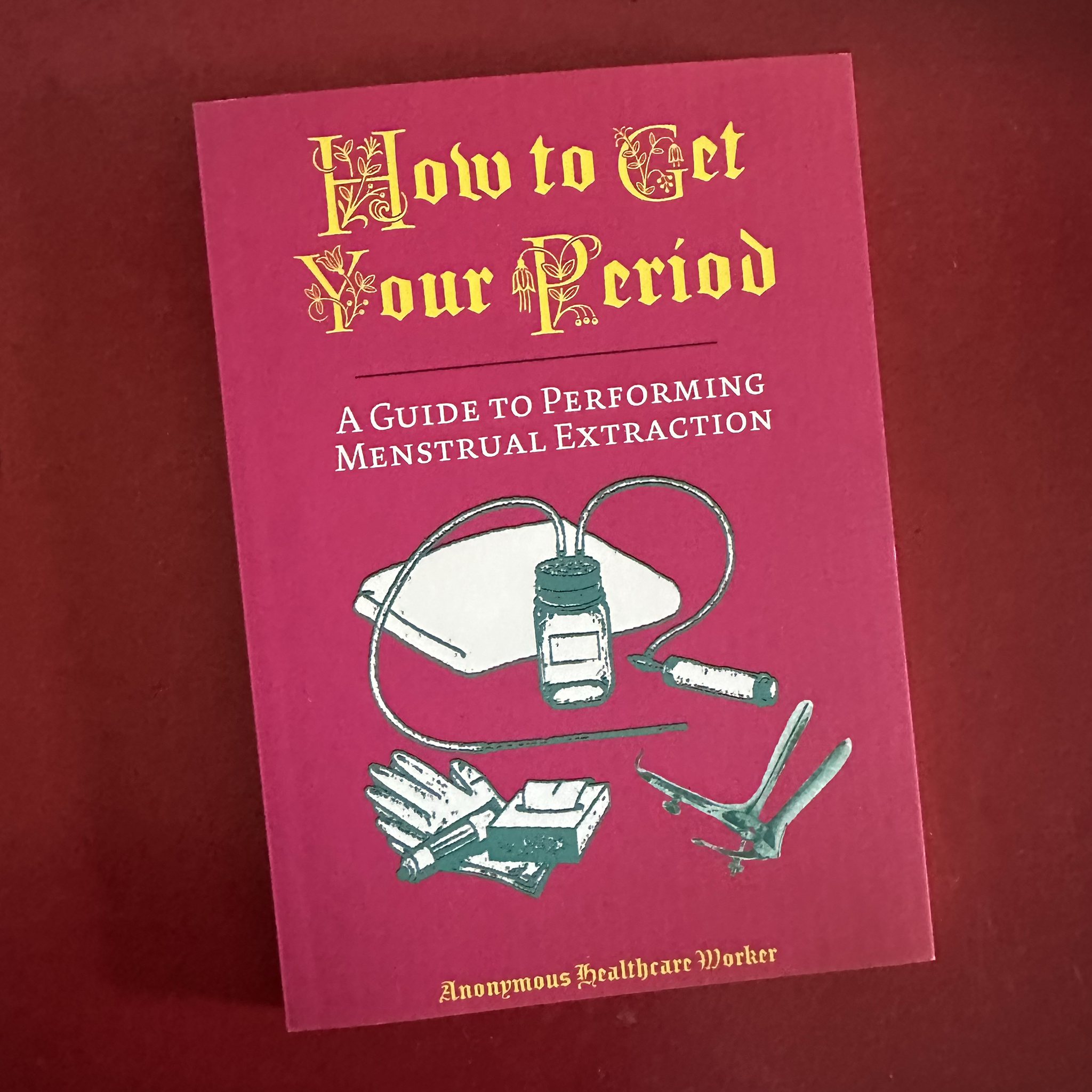How To Get Your Period: A Guide to Performing Menstrual Extraction
In 1971, as part of their work with their feminist reproductive collective, Lorraine Rothman and Carol Downer invented menstrual extraction, a suction process to pass the entire period all at once, which has the side effect of ending any undetected early pregnancy. An underground network of providers has kept menstrual extraction alive ever since, and now, in a post-Roe era, the demand is surging. Written by an anonymous medical professional, How to Get Your Period: A Guide to Performing Menstrual Extraction provides a short history of menstrual extraction and detailed instructions and diagrams explaining how to safely and effectively perform a manual exam, use a speculum, assemble a Del-Em kit, and complete a menstrual extraction procedure. You'll also learn when not to perform menstrual extraction and find an overview of other safe and effective options for bringing about menstruation or ending a pregnancy in the first trimester. In addition to heralding the incredible discovery of these historical heroes and affirming the need for abortion rights, this book offers menstrual extraction as a method to understand and protect our own bodies, choices, and reproductive rights even as they are under attack.
How to Get Your Period, A Guide to Performing Menstrual Extraction by an anonymous healthcare worker, is 126 pgs of detailed history of this practice and cautions.
Products with overlapping uses:
How To Get Your Period: A Guide to Performing Menstrual Extraction

